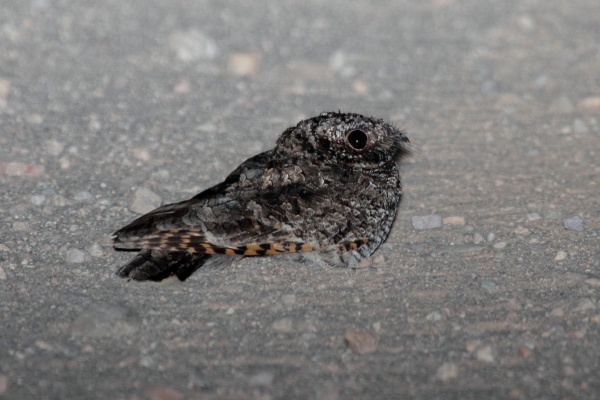While reading about birds’ response to heat stress I came across this amazing story of a bird that appears to hibernate!
The common poorwill (Phalaenoptilus nuttallii) is the smallest North American nightjar, a member of the family Caprimulgidae that includes the common nighthawk and eastern whip-poor-will. He lives in the arid West and, like his relatives, hunts for insects on the wing at dusk and dawn and on moonlit nights.
Flying insects are an unpredictable food source so when the weather’s bad or food supplies are low the poorwill prevents starvation by entering torpor. He roosts, drops his body temperature to as little as 4.3oC (40oF) and reduces his oxygen intake by more than 90%. He can do this on a daily basis if he has to and can even enter torpor while incubating eggs.
Poorwills take torpor to an extreme. Rather than leave North America for the winter as nighthawks do, the poorwills remain in northern Mexico and the southwestern U.S. where winter can be too cold for flying insects. They cope by entering torpor and staying there for two to three months!
To help themselves wake up they choose a location where the sun will warm them. It needs to be a safe place because it takes seven hours for them to fully heat up. This is probably why they are small. The larger the animal, the longer it takes to leave torpor.
The Hopi knew this bird’s amazing trait and named him Hölchoko — “The Sleeping One.”
(photo from Wikimedia Commons. Click on the image to see the original. Today’s Tenth Page is inspired by page 160 of Ornithology by Frank B. Gill.)
